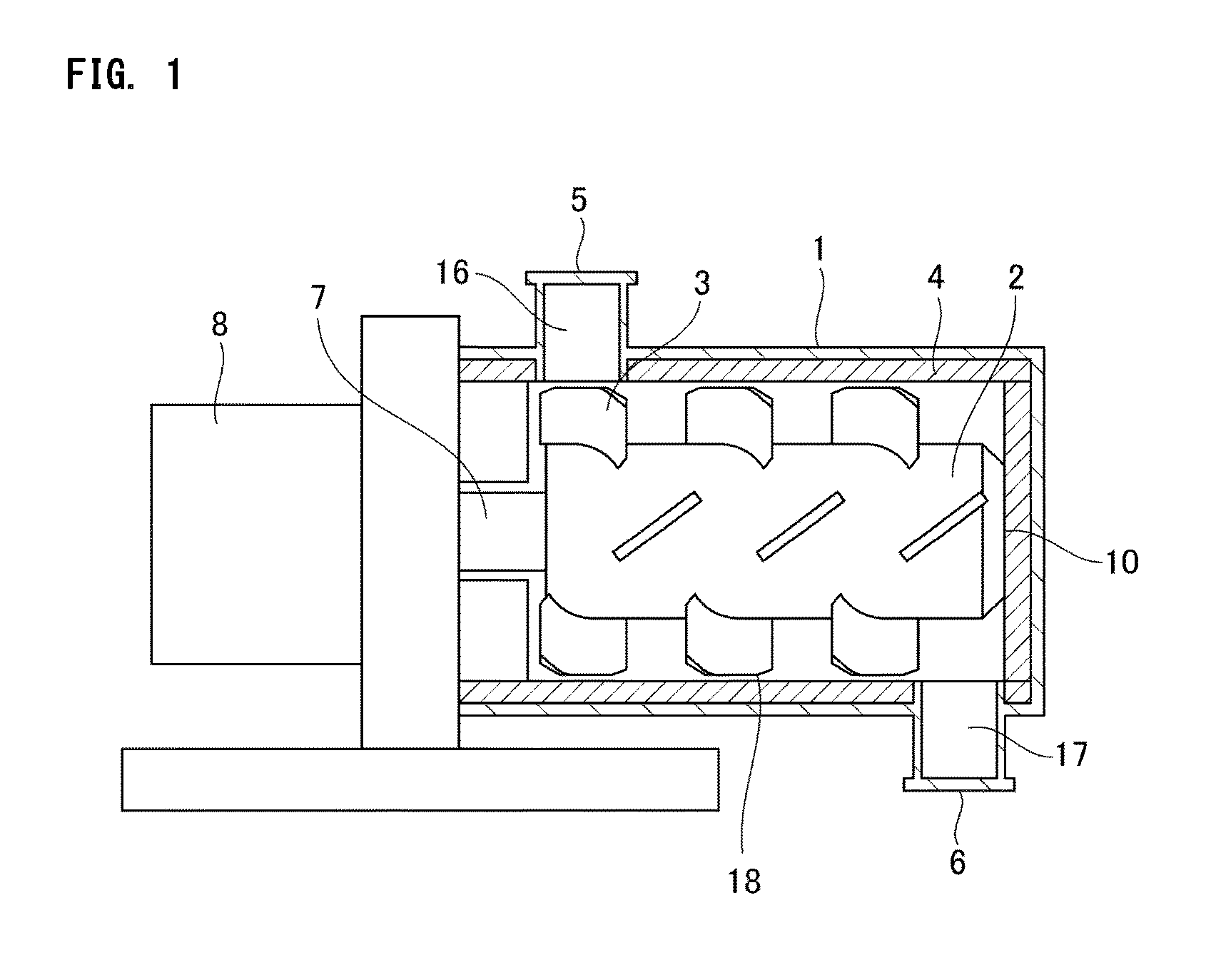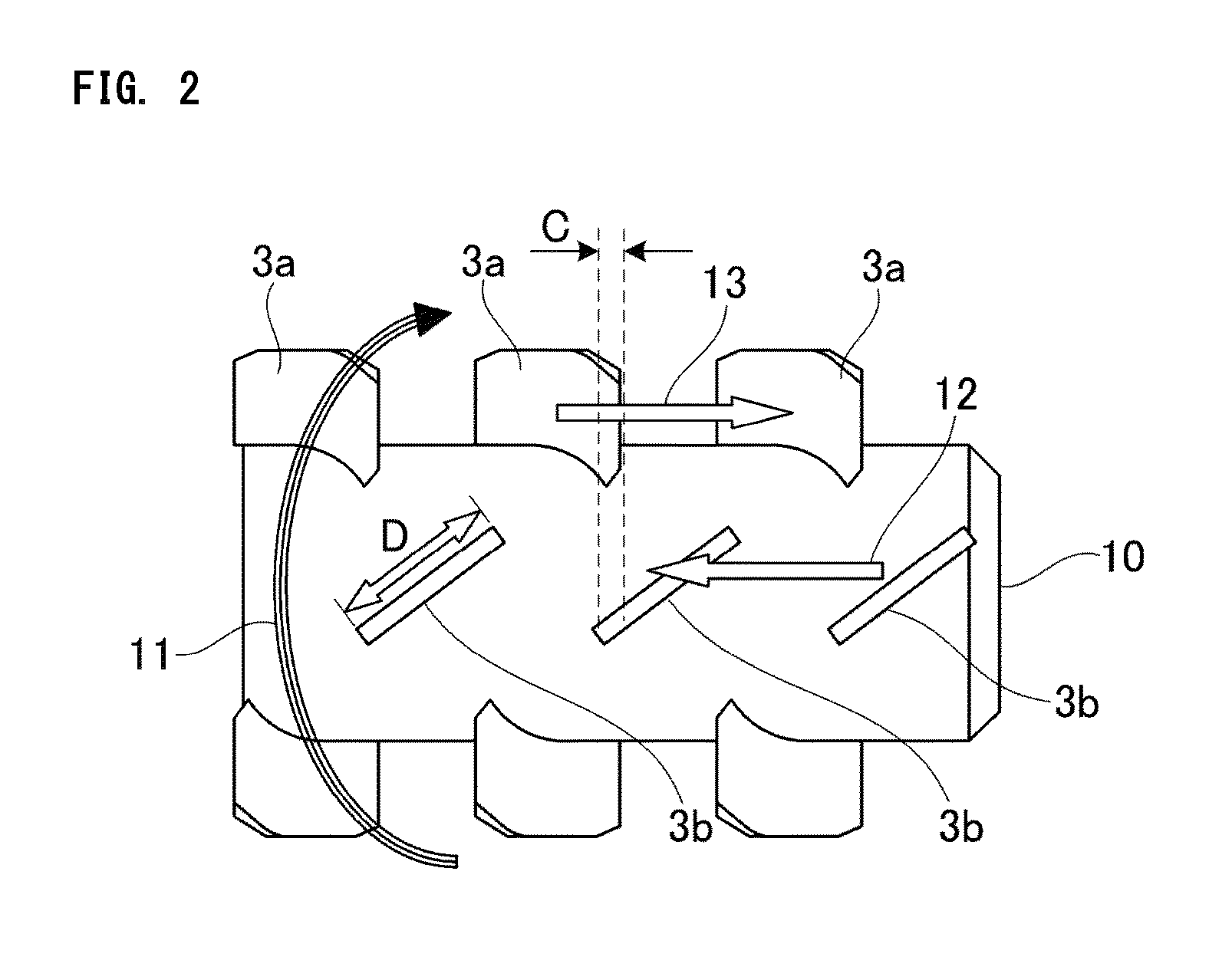Method of producing magnetic carrier and magnetic carrier that uses this production method
a production method and magnetic carrier technology, applied in the field of producing magnetic carrier and magnetic carrier that uses this production method, can solve the problems of non-uniform layer on the magnetic carrier surface, leakage event, and agglomeration of magnetic carrier when the magnetic carrier is agglomerated
- Summary
- Abstract
- Description
- Claims
- Application Information
AI Technical Summary
Benefits of technology
Problems solved by technology
Method used
Image
Examples
example 1
[0324]A magnetic carrier was produced by carrying out a coating process using the apparatus shown in FIG. 1 and using the materials and production method described in the following.
[0325]In this example, the coating process was performed using an apparatus as shown in FIG. 1 in which the inner diameter of the main casing 1 was 130 mm and the rated power for the drive member 8 was 5.5 kW.
[0326]The spatial volume B of the minimum gap 18 between the inner circumferential surface of the main casing 1 and the stirring members 3 was 2.7×10−4 m3 and the maximum width D of the stirring members 3 was 25.0 mm. The volume A of the magnetic carrier core and resin composition particles, i.e., the processed material, was 5.7×10−4 m3 and A / B, i.e., the relationship with the spatial volume B of the minimum gap between the inner circumferential surface of the main casing 1 and the stirring members, was 2.1.
[0327]The distance C, which indicates the overlap region between the stirring member 3a and th...
examples 2 to 13
[0406]In Examples 2 to 13, magnetic carriers were prepared entirely the same as in Example 1, but changing the conditions for the coating process on the magnetic carrier 1 as shown in Table 2. The prepared magnetic carriers were then evaluated as in Example 1. The results are shown in Table 3.
PUM
 Login to View More
Login to View More Abstract
Description
Claims
Application Information
 Login to View More
Login to View More - R&D
- Intellectual Property
- Life Sciences
- Materials
- Tech Scout
- Unparalleled Data Quality
- Higher Quality Content
- 60% Fewer Hallucinations
Browse by: Latest US Patents, China's latest patents, Technical Efficacy Thesaurus, Application Domain, Technology Topic, Popular Technical Reports.
© 2025 PatSnap. All rights reserved.Legal|Privacy policy|Modern Slavery Act Transparency Statement|Sitemap|About US| Contact US: help@patsnap.com



